Best Haskell Programming Guides to Buy in January 2026
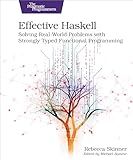
Effective Haskell: Solving Real-World Problems with Strongly Typed Functional Programming


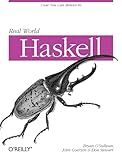
Real World Haskell
- AFFORDABLE PRICES FOR QUALITY READS-SAVE ON YOUR NEXT FAVORITE BOOK!
- ECO-FRIENDLY CHOICE: PROMOTE SUSTAINABILITY BY BUYING USED BOOKS.
- CAREFULLY VETTED: ALL BOOKS ARE IN GOOD CONDITION FOR A GREAT READ.


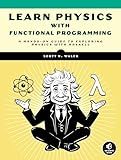
Learn Physics with Functional Programming: A Hands-on Guide to Exploring Physics with Haskell



Programming in Haskell



Learn You a Haskell for Great Good!: A Beginner's Guide
- AFFORDABLE PRICES: SAVE MONEY WITH HIGH-QUALITY USED BOOKS!
- ECO-FRIENDLY CHOICE: SUPPORT SUSTAINABILITY BY CHOOSING USED BOOKS.
- QUALITY ASSURANCE: ALL BOOKS INSPECTED FOR GOOD CONDITION AND VALUE.



Miriam Haskell Jewelry
- AFFORDABLE PRICING FOR QUALITY BOOKS, SAVING YOU MONEY!
- ENVIRONMENTALLY FRIENDLY CHOICE-REDUCE, REUSE, RECYCLE!
- QUALITY ASSURANCE: EACH BOOK IS INSPECTED FOR GOOD CONDITION.



Production Haskell: Succeeding in Industry with Haskell


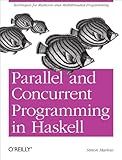
Parallel and Concurrent Programming in Haskell: Techniques for Multicore and Multithreaded Programming


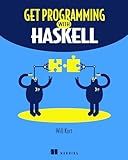
Get Programming with Haskell


In Haskell, to get an element in a list, you can use the !! operator along with the index of the element you want to access. The !! operator takes a list on the left side and an index on the right side, and returns the element at that index. Here's an example:
myList = [1, 2, 3, 4, 5] element = myList !! 2
In the above code, myList !! 2 returns the third element of the list myList, which is 3.
It's important to note that Haskell lists are zero-indexed, meaning the first element has an index of 0, the second element has an index of 1, and so on. If you try to access an element at an index that is out of bounds (i.e., negative index or greater than or equal to the length of the list), it will result in an error.
otherList = [10, 20, 30] element = otherList !! 4 -- This will cause an error since the index is out of bounds
So, when accessing elements in Haskell lists, make sure to provide a valid index within the range of the list's length.
Are Haskell lists resizable?
No, Haskell lists are not resizable. Once a list is created, its length cannot be changed.
Is it possible to access an element in the middle of a list in Haskell?
Yes, it is possible to access an element in the middle of a list in Haskell. However, due to Haskell's laziness, lists are not designed to be indexed or accessed efficiently like arrays in imperative programming languages.
One approach to access an element in the middle of a list is to use the !! operator, which allows you to access an element at a specific index. However, using !! has a time complexity of O(n), where n is the index of the element you want to access. This means that accessing an element in the middle of a large list can be inefficient.
Here's an example of using !! to access an element in the middle of a list:
middleElement :: [a] -> Maybe a middleElement lst = if length lst `mod` 2 == 0 then Nothing -- list has even length, so there is no exact middle element else Just (lst !! (length lst `div` 2))
In this example, the middleElement function takes a list lst and returns a Maybe a, where a is the type of elements in the list. If the list has an odd length, it returns Just the middle element using lst !! (length lst div 2), otherwise, it returns Nothing.
Note that using !! on large lists or in performance-critical code is generally not recommended. If you frequently need to access elements in the middle of a list, you might want to consider using a different data structure, such as an array or vector, for improved performance.
What is Haskell?
Haskell is a purely functional programming language that was developed in the late 1980s. It is named after the logician Haskell Curry and has been designed as a general-purpose language with a strong emphasis on correctness, simplicity, and elegance.
Haskell is known for its strong static typing system, which helps in catching many errors at compile-time. It also supports lazy evaluation, allowing the evaluation of values to be delayed until they are actually needed. This aids in writing concise and efficient code.
The language includes many advanced and powerful features such as type inference, higher-order functions, pattern matching, list comprehensions, and algebraic data types. It also has a rich ecosystem of libraries and tools that support various domains like web development, data analysis, and concurrent programming.
Haskell is often used in academic and research environments due to its strong foundations in functional programming concepts and its suitability for formal verification and provable correctness. However, it is also gaining popularity in industry, with Haskell-based projects being developed by companies like Facebook, Google, and GitHub.
How do you remove an element from a list in Haskell?
In Haskell, you can remove an element from a list by using various methods. Here are a few common approaches:
- Using List Comprehension: One way to remove an element from a list is to define a list comprehension that filters out the desired element. Here's an example:
removeElement :: Eq a => a -> [a] -> [a] removeElement _ [] = [] removeElement x (y:ys) | x == y = removeElement x ys | otherwise = y : removeElement x ys
In this code, the removeElement function takes an element x and a list (y:ys). It checks if x matches y, and if it does, it recursively calls itself with the tail of the list (ys). If x and y do not match, y is added to the result list, and the function is called recursively with the tail of the list.
- Using the filter function: The filter function allows you to create a new list by filtering out elements that match a given condition. You can use it to remove a specific element from a list. Here's an example:
removeElement :: Eq a => a -> [a] -> [a] removeElement x = filter (/= x)
In this code, the removeElement function takes an element x and uses the filter function with the condition (/= x). This condition checks that the element being filtered is not equal to x. The filter function will create a new list without the matched elements.
- Using the (\\) operator: Haskell provides the (\\) operator to remove elements in one list that also appear in another list. Here's an example:
import Data.List ((\\))
removeElement :: Eq a => a -> [a] -> [a] removeElement x xs = xs \\ [x]
In this code, the removeElement function takes an element x and a list xs. It uses the (\\) operator to subtract the list [x] from xs, effectively removing any occurrences of x from the list.
These are just a few examples of how you can remove an element from a list in Haskell. Remember to consider the specific requirements of your use case to choose the most appropriate approach.
How do you append elements to the end of a list in Haskell?
In Haskell, you cannot directly append elements to the end of a list, as lists are immutable. However, you can create a new list by concatenating two existing lists, effectively appending elements to the end.
The most common way to append elements to the end of a list is by using the ++ operator. Here's an example:
appendToList :: [a] -> a -> [a] appendToList list element = list ++ [element]
In this example, appendToList takes a list list and an element element as input. It creates a new list by appending element to the end of list using the ++ operator.
Alternatively, you can also use the : operator, also known as the cons operator, to prepend an element to the start of a list. By leveraging this operator, you can reverse a list and then use the : operator to prepend the element to the reversed list, effectively appending it to the end. Here's an example:
appendToList :: [a] -> a -> [a] appendToList list element = reverse (element : reverse list)
In this example, appendToList takes a list list and an element element as input. It first reverses list, then uses the : operator to prepend element to the reversed list. Finally, it reverses the result again to get the final appended list.
Can you modify the elements of a list in Haskell?
No, you cannot modify the elements of a list in Haskell directly. Haskell promotes immutability, which means that once a value is defined, it cannot be changed. However, you can create a new list by applying transformations or modifications to the original list.
